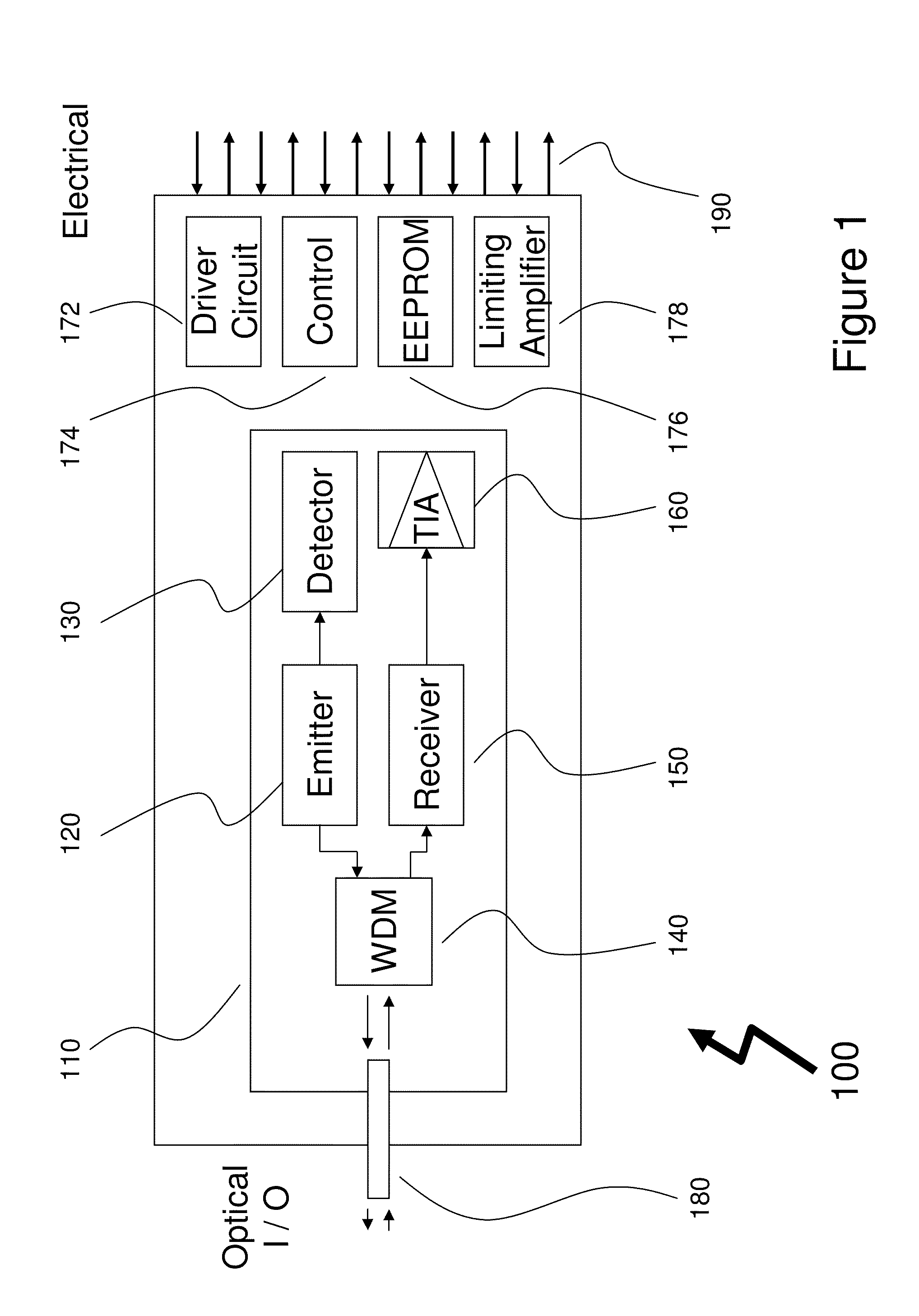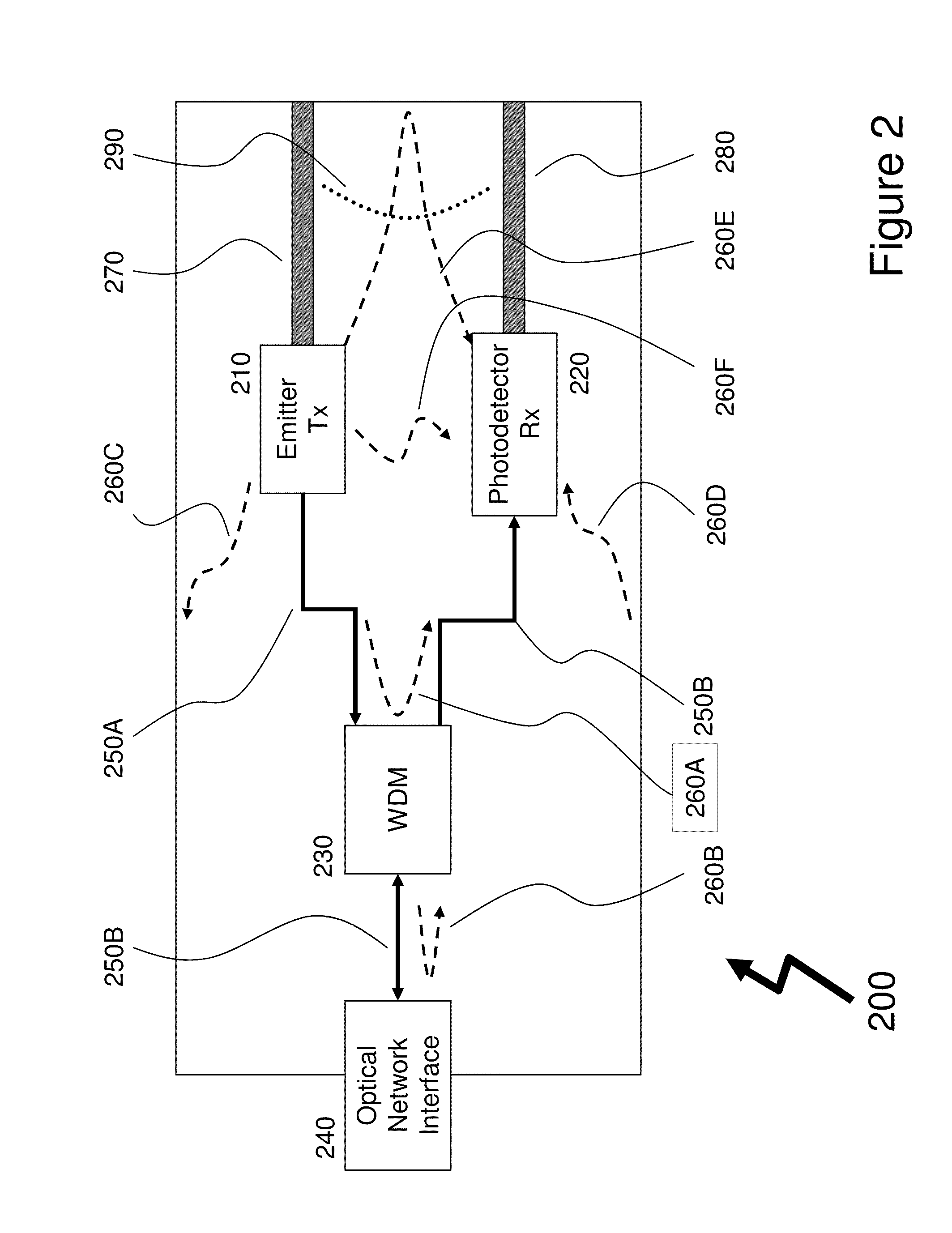Crosstalk mitigation in optical transceivers
a technology of optical transceivers and crosstalk mitigation, which is applied in electromagnetic transceivers, lasers, instruments, etc., can solve the problems of labor-intensive optical alignment and multiple packaging, the cost of optical alignment and volume scalability in the manufacturing of such components is increasing, and the deep penetration of optical fiber into access networks requires a massive deployment of optical interface equipmen
- Summary
- Abstract
- Description
- Claims
- Application Information
AI Technical Summary
Benefits of technology
Problems solved by technology
Method used
Image
Examples
Embodiment Construction
[0050]The present invention is directed to method of correcting a received signal from a primary photodetector with a correction signal derived from a secondary photodetector disposed in a predetermined relationship to the primary photodetector. The correction signal being substantially that of the primary photodetector minus the intended received signal for this primary photodetector, the secondary photodetector not receiving the intended received signal and thereby receiving only optical and / or electrical crosstalk. Accordingly combining the electrical signals from the primary and secondary photodetectors allows this crosstalk to be subtracted thereby improving the signal-to-noise ratio of the intended received signal.
[0051]Reference may be made below to specific elements, numbered in accordance with the attached figures. The discussion below should be taken to be exemplary in nature, and not as limiting of the scope of the present invention. The scope of the present invention is ...
PUM
 Login to View More
Login to View More Abstract
Description
Claims
Application Information
 Login to View More
Login to View More - R&D
- Intellectual Property
- Life Sciences
- Materials
- Tech Scout
- Unparalleled Data Quality
- Higher Quality Content
- 60% Fewer Hallucinations
Browse by: Latest US Patents, China's latest patents, Technical Efficacy Thesaurus, Application Domain, Technology Topic, Popular Technical Reports.
© 2025 PatSnap. All rights reserved.Legal|Privacy policy|Modern Slavery Act Transparency Statement|Sitemap|About US| Contact US: help@patsnap.com



